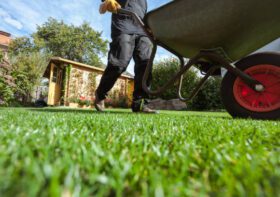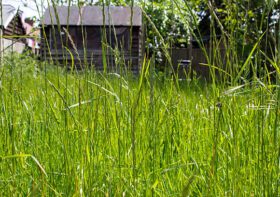Why Maintaining Your Siding Matters More Than You Think

Siding isn’t just there to make your home look nice. It plays a big role in keeping your house protected, comfortable, and even energy-efficient. But here’s the thing—most people don’t think much about their siding until there’s a problem. And by then? It’s often too late for a quick fix.
If you’ve been putting siding maintenance on the back burner, it’s time to change that. Let’s break down why it’s important, what can go wrong if you ignore it, and how a little upkeep can save you time, money, and stress.
What Does Siding Actually Do?
Siding isn’t just about curb appeal. Sure, it contributes to how your home looks, but it’s doing a lot more behind the scenes:
- Protection – Siding acts like a shield, defending your home from rain, wind, sun, snow, and everything in between.
- Insulation – It helps regulate your home’s temperature by providing an extra layer between you and the outside elements.
- Structural Support – While not the main framework, good siding helps reinforce the exterior of your home.
- Pest Barrier – Properly maintained siding helps keep bugs, rodents, and moisture from sneaking in.
So when siding starts to wear out or break down, it’s not just a cosmetic issue—it can lead to bigger problems.
The Risks of Ignoring Your Siding
Letting damaged or aging siding go unchecked might not seem like a big deal at first—but small issues can spiral fast. That’s why it’s smart to stay on top of practical maintenance tips for your siding. Knowing what to look for and how to care for it can save you a lot of hassle (and money) down the line.
Water Damage
Cracks, holes, or warped panels let water in. And once water gets under your siding, it can soak into the wood behind it. This leads to mold, rot, and potentially even structural damage. The worst part? You often don’t see the damage until it’s widespread.
Energy Loss
Poorly maintained siding lets in drafts. In summer, that means hot air seeping in. In winter, it means your heat is slipping out. Your energy bills go up, and your home becomes less comfortable.
Pest Infestations
Termites, ants, and even small rodents can make their way into your walls through gaps in the siding. If they find moisture or warmth, they’ll stick around—and multiply.
Lower Property Value
If you’re thinking of selling, worn-out siding can make a bad first impression. Even if the interior is updated, the outside can turn potential buyers away—or drive down your asking price.
Costly Repairs Down the Line
Small maintenance tasks cost very little. But replacing entire sections of siding, dealing with water damage inside your walls, or fixing insulation problems? That can be thousands of dollars.
Signs Your Siding Needs Attention
Not sure if your siding’s in trouble? Here’s what to watch for:
- Warped or buckled boards
- Cracks or holes
- Fading color or peeling paint
- Mold, mildew, or algae buildup
- Increased energy bills
- Siding that feels soft or spongy when pressed
- Gaps between panels
Even if everything looks fine, it’s still smart to check your siding a couple of times a year—especially after a storm or extreme weather.
What Maintenance Actually Looks Like
You don’t need to become a contractor to keep your siding in good shape. A few basic steps can go a long way.
1. Visual Inspections
Walk around your home a couple of times a year and really look at your siding. Check for any of the warning signs above. It helps to do this in spring and fall—and after any major weather events.
2. Clean It Regularly
Dirt, mold, and mildew can all break down siding over time. Use a garden hose or a soft brush with soapy water to gently clean the surface. Avoid pressure washers unless you’re sure your siding can handle it.
3. Repaint or Reseal When Needed
If your siding is painted or sealed, it’ll need touch-ups now and then. Paint helps protect against moisture, so keep an eye out for peeling or fading.
4. Fix Small Issues Early
Found a crack or a loose board? Don’t wait. A simple patch or replacement panel now could save you major repair work later.
5. Keep Shrubs and Trees Trimmed
Branches rubbing against your siding can cause scratches, holes, or even pull panels loose. Keep plants trimmed back so they’re not brushing up against the exterior.
Does It Really Save You Money?
Yes, and here’s how:
- Prevents major repairs – Fixing a crack is cheap. Replacing water-damaged walls? Not so much.
- Lowers energy costs – Good siding means better insulation, which helps your HVAC system work less.
- Protects your home’s value – Well-maintained siding boosts curb appeal and keeps future buyers interested.
Think of siding maintenance as insurance. A little effort now protects you from big expenses later.
So, Is It Worth the Effort?
Absolutely. Maintaining your siding isn’t about keeping up appearances (though it does help with that). It’s about protecting your home, avoiding costly repairs, and making sure everything behind your walls stays dry, clean, and secure.
The good news? You don’t need to spend weekends doing heavy labor. A couple of short check-ins each year, some cleaning, and the occasional small fix is usually all it takes.
And if you ever spot something you’re unsure about? Get a professional opinion sooner rather than later. Catching things early is always cheaper and easier than dealing with the fallout later.
Keep Your Home Looking (and Working) Its Best
Your siding does a lot of heavy lifting. It deserves more attention than it usually gets. Regular maintenance is simple, affordable, and one of the smartest things you can do to protect your home.
So take a few minutes, walk around your house, and see how your siding’s holding up. A little care now could save you a whole lot down the road.



